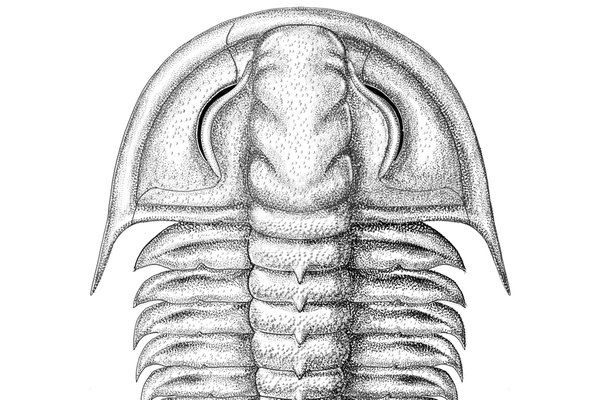The amazing detective story of an exotic worm’s journey
How did a worm in Japan also occur in France? And what do oysters have to do with it? Pat Hutchings and Nicolas Lavesque delve into the story of an exotic worm to find the answers.
The story starts in 2017 when we described a new species of bait worm, Marphysa victori from Arcachon Bay France, which was associated with oyster beds. Prior to this discovery, only one species had been described from this Bay, Marphysa sanguinea (originally described from SW England). All the worms of this genus are called blood worms and are widely prized as fish bait by recreational fishers all over the world.

Artistic representation of Marphysa victori Lavesque, Daffe, Bonifácio & Hutchings, 2017, Watercolour.
Image: Lisa Miroglio© Lisa Miroglio
An observant Japanese colleague, Hirokazu Abe, realised that his undescribed species of Marphysa from Japan had similar sequences to ours from Arcachon Bay. We started talking during last International Polychaete Conference (Long Beach, August 2019) and Hirokazy kindly sent us some of his animals. We carefully checked his material against the holotype of M. victori, deposited in the Australian Museum, and found they were identical. So how did a worm in Japan also occur in France? Well we must go back in time, to the late 1960’s when the important oyster industry on the west coast of France collapsed due to a disease. To resuscitate the industry, oyster farmers imported about 1200 tonnes of spat (oyster larvae attached to the oyster shell) from Japan between 1971 and 1975, exactly from the site where Hirokazu collected his worms. Back in the early 1970’s, they collected the spat amongst oyster shells without cleaning the mud – and without cleaning the animals living in the mud. They shipped them in seawater from Japan to France, oxygenating the water to ensure the spat was live and able to establish a population in France. Certainly, the lucrative oyster industry was restored, albeit with a different species of oyster; currently about 7,000- 8,000 tonnes per year is harvested, making it one of the major French oyster farming sites. We hypothesise that M. victori may lay their fertilised eggs in mucous cocoons (as is the case with related species), which were amongst the imported oysters or perhaps juveniles were concealed amongst them. However, this is purely a hypothesis; all we know is that Japanese worms were introduced, and associated with this import, and these worms have established populations in Arcachon Bay.

Oyster culture in water on sandy beaches is a tradition in the Bay of Arcachon during tides.
Image: Tanja CotoagaTanja Cotoaga, Unsplash
So why the delay in recognising that the worm was introduced from the 1970’ into the Bay? Well, all species of Marphysa look fairly similar until they are examined under the microscope. Marphysa sanguinea had already been recorded in the Bay and so this intruder was not noticed. This was until we started working on the polychaetes of the Bay, and noticed that another species was present and described it as new in 2017 – but this is not the end of the story. In 2017, Pat had a Chinese student, Yubin Liu, who visited the AM Marine Invertebrates lab for a year to sort out the species of Marphysa from China. The species had previously been mainly identified as M. sanguinea, originally described from SW England, and which we know is restricted to the English Channel and NW France. Yubin bought his worms from professional bait collectors and we described five new species of Marphysa in 2017 and 2018. We also know that live specimens are shipped throughout SE Asia, especially Japan, for fish bait – in the range of 1000 tonnes annually. Recently, we were able to re-examine these species and able to undertake molecular studies. One of these species M. bulla Liu, Hutchings & Kupriyanova, 2018, was identical to M. victori, so we have synonymised M. bulla with M. victori (which was described a year earlier than M. bulla).

Bait boxes with blood worms collected in Arcachon Bay photo Nicolas Lavesque.
Image: Nicolas Lavesque© Nicolas Lavesque
While we are confident that Marphysa was transferred from Japan to France via imports of oyster spat, and that bait worms are moved from China to Japan, what is unclear is whether the worms introduced into France were originally from Japan or from China via Japan.
Several other groups of introduced animals have been reported from Arcachon Bay but this is only the second time a worm has been identified. We have no data to suggest that this invasive species has an impact on the ecology of the Bay. However, it does identify the need to more carefully regulate the movement of agriculture products, as not all are benign; especially because M. victori is widely collected in Arcachon Bay (about 1 million of worms per year) and worms are exported live and sold in many fishing shops for recreational activities. Therefore, this Japanese worm is potentially being introduced throughout Europe.
Pat Hutchings, Senior Fellow, Marine Invertebrates, Australian Museum Research Institute
Nicolas Lavesque, Research Engineer, French National Centre for Scientific Research (CNRS)
More information:
Lavesque, N., Hutchings, P., Abe, H., Daffe, G., Gunton, L., Glasby, C.J. 2020. Confirmation of the exotic status of Marphysa victori Lavesque, Daffe, Bonifacio & Hutchings, 2017. (Annelida) in French waters and synonymy of Marphysa bulla Liu, Hutchings & Kupriyanova, 2018. Aquatic Invasions 15, In press.
Lavesque N, Daffe G, Bonifácio P, Hutchings P. 2017. A new species of the Marphysa sanguinea complex from French waters (Bay of Biscay, NE Atlantic) (Annelida, Eunicidae). ZooKeys 716: 1-17. https://doi.org/10.3897/zookeys.716.14070
Liu Y., Kupriyanova, E, & Hutchings, P. 2018. Two new species of Marphysa Quatrefages, 1865 (Polychaeta: Eunicida: Eunicidae) from northern coast of China and redescription for Marphysa orientalis Treadwell, 1936. Zootaxa 4377(2): 191–215. doi.org/10.11646/Zootaxa.4377.2.3.




